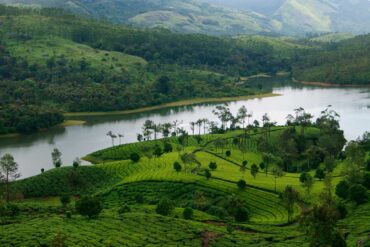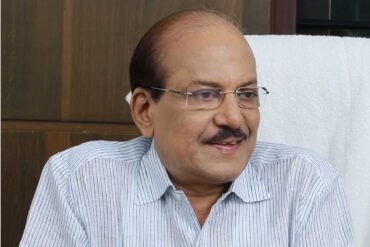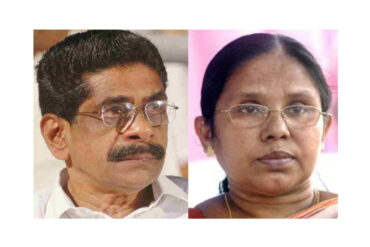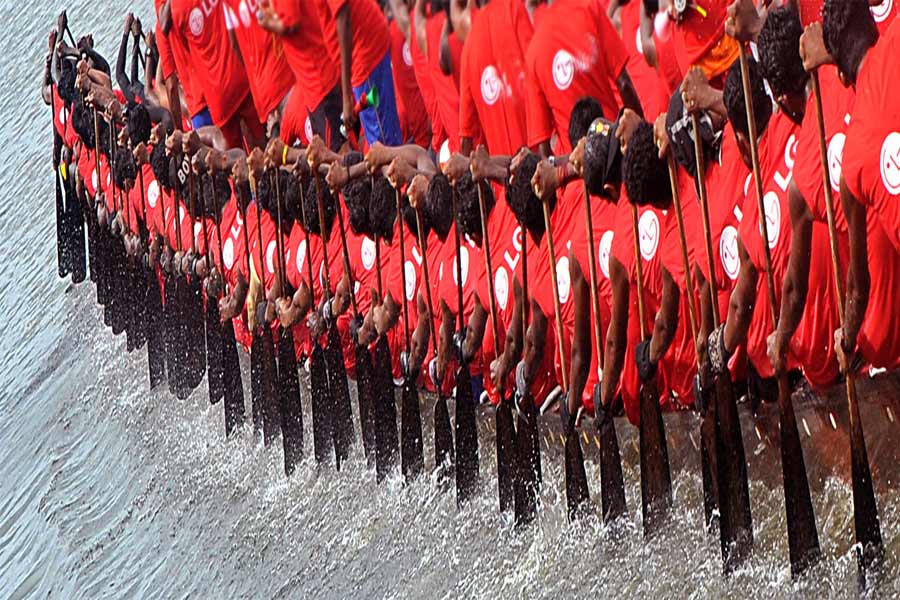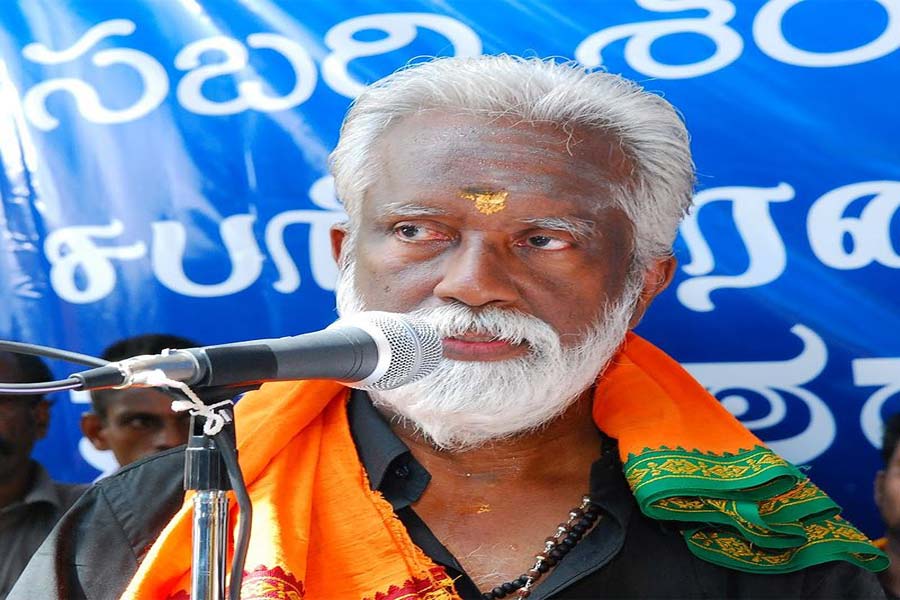The sleepy town slowly opens its eyes as the fury of monsoons turns into a pleasant drizzle. The angry rivers have calmed down and the churning lake lie placid. There is a bright sparkle in those eyes that is otherwise stoic. The rhythm of a land reverberates in the steps of the townsfolk. It is that time of the year, when the heart of a land beats in perfect rhythm to the clarion call of its boatmen, “Aaarrrrpppo, Irrrro, Irrrro, Irrrro.” And for us kids, the culmination of a year long wait.
The story goes back to the wars of yore between the small water logged kingdoms of Chempakassery, Kayamkulam, Thekkumkoor and Vadakkumkoor, parts of today’s Alappuzha and Kottayam districts. The king of Chempakassery was a worried man after continuous defeats. His war boats were too slow and ill prepared. The search for an aashaaari, ended in Koduppunna Venkitanaryanan Aashaari. The rest, as they say, is history. The aashaari crafted a long, sleek boat that could cut through water and carry more than a hundred warriors at once.
More than a hundred feet in length, they were called ‘chundan valloms’ for their pointed bows, literally translated as beaks. Wonder who thought up the term ‘snake boat’. The stern supposedly looks like the hood of a king cobra but I’ve always thought it looks like the caparisoned elephant with its glittering nettipattam. Anyway, the king of Chempakassery never had to look back again. The Bollywood-esque epilogue has a dashing young man sent as a spy by the king of Kayamkulam to learn the craft of war-boat building. Seducing the aashan’s daughter with promises of marrying her, the roguish spy learned the secret and promptly disappeared to build similar boats for his king. Alas, when it came to the proof of the pudding, his boats were no comparison to the originals. The master craftsman was a crafty one, for sure.
The snake boats must have continued to be used as boats of war, but no particular stories seem to be recorded till our first Prime Minister Jawaharlal Nehru decided to visit Alappuzha and Kottayam in 1952. Around ten such boats accompanied him as he traveled in a motor boat across the waters and a race was organized for his benefit. And enjoy, he did! Apparently, he was so excited that he jumped onto the winner, the ‘Nadubhagom Chundan.’ He went back to the capital, but the excitement stayed with him. He had a replica made in rosewood and had it sent back to Kerala. Thus was born the now world famous Nehru Trophy Boat Race.
The second Saturday of August needed no reminder in a calendar. It is etched in stone in the heart of every true Kuttanadan. And like most of the other homes in the town, it was a day of festival when all the friends and relatives would descend in droves and walk as one to Punnamada Lake. No GPS was needed, the path was grafted into their DNA.
Our family was large, especially on my mother’s side. Between my grandfather and his three siblings, they had thirty offsprings. And many of them were just a few years older than me. Yes, many of my uncles and aunts were more like my siblings. Led by my normally stern grandfather, at least fifteen of them would arrive at our house by ten in the morning. Our young feet would be tapping in impatience if they were late even by a few minutes. The fire in our kitchen would have been burning overtime for days, ensuring continuous flow of dishes to a dining table that had not a single inch uncovered by food. Off we would go, after a sumptuous lunch, with packets of crisp meat cutlets and bottles of water in hand, obediently like school kids out on a break, with grandfather in the lead.
The Punnamada Lake borders the town of Alappuzha and its canals lead to the largest lake In Kerala, the Vembanad Lake. The otherwise quiet waterways come to life from early July, the time when the season of traditional boat races, or vallom kali, as it is called, starts. This was years before tourism and its byproduct, the house boats, became ubiquitous. Temporary galleries would come up, made of the trunks of areca nut trees and firmly held in place by sturdy coils of rope.
Spending money on fun was anathema for that generation, but this was life itself. We would have only the best seats. The seats had to be claimed by noon, first come first served was the norm and the races started at the strike of 2 pm. First would come the grand procession, all the participating boats out in full splendor, the boatmen rowing in slow rhythm, the oars against the water as one, to the tunes of the traditional boat songs, the vanchi paattu.
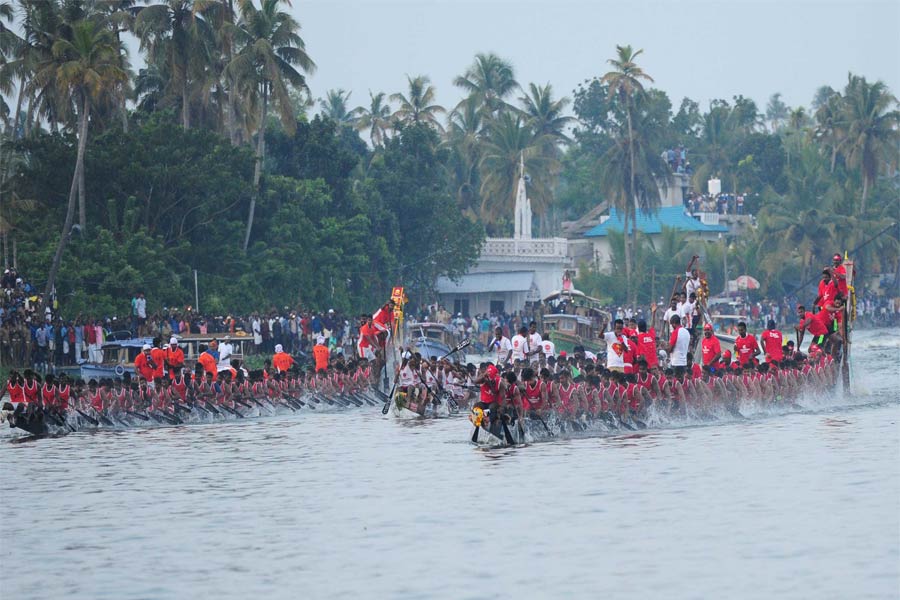
The races started with the prelims or ‘heats’ as they were called. Four to five rounds and four to five snake boats in each. The winners of these would compete in the finals. But in between, would be the others. Veppu vallams, that was once used for cooking for the warriors, the Churulan vallams, that gets its name from their curved ends, and the Iruttukuthi, literally meaning one that traverses darkness. The last one was supposedly used by pirates and hence the association with night. Then there was the customary round of women’s boat race, usually in the Churulan variety. These were but mere interludes, when we feasted on cutlets and watched the antics of drunk men frolicking in water. The navy helicopters would circle overhead and we would watch in awe as the troopers parachuted down, dutifully bursting some colourful powder into the atmosphere, whence the very same choppers would come back to rescue.
The fun started in all seriousness after that. First round after the interval was all the fourth-place holders from the heats, then the ones that came third, the losers final and then the race of the day. The Nehru Trophy Finals. Yes, we had our favourite clubs and boats too. The sleek Kaarichaal, the stately Nadubhagom Chundan, the legendary Kavalam Chundan whose heydays were over by then, the famous Jawahar Thayamkari, the rebuilt Anari Puthen Chundan, were names that were etched in our hearts. And the last fight would almost always be between two stalwarts, UBC Kainakary and Kumarakom Boat Club.
The starting point was far away, for the track had to be that long for boats that were more than 100 feet long. The small transistor that grandfather carried came handy to know who was leading. The whole gallery would move as one. Glistening bodies arching in perfect rhythm, hundreds of oars cutting the lake as one, a single beat in those hearts and in ours, the ‘hee-haw’ of the helmsmen, anything could change in a matter of seconds. The boats well-oiled in sardine oil the previous day, shining in the evening sun and gliding over the waves, and the quintessential nail-biting finish. The winners raising their oars in a unified salute, was a sight that filled our hearts to the brim and sometimes made it overflow, irrespective of who the winner was. Goosebumps rise on my arms just remembering those finals.
We grew up and apart. One after another, the family dispersed. Living room couches took the place of those makeshift galleries as Keltron TVs moved Punnamada Lake into our homes. As other interests and life interfered, Nehru Trophy turned into a news item. As I read the lead ups to this year’s race and of boat races turning into league style matches, it doesn’t take even a moment to get transported back to those second Saturdays of August (postponed due to floods to August 31). And I realize it is no more the races that I miss. It is that feeling of togetherness, of being connected. That seems to be lost forever.
Nehru Trophy Boat Race, Cover Picture Credit: Rajeev Prasad



